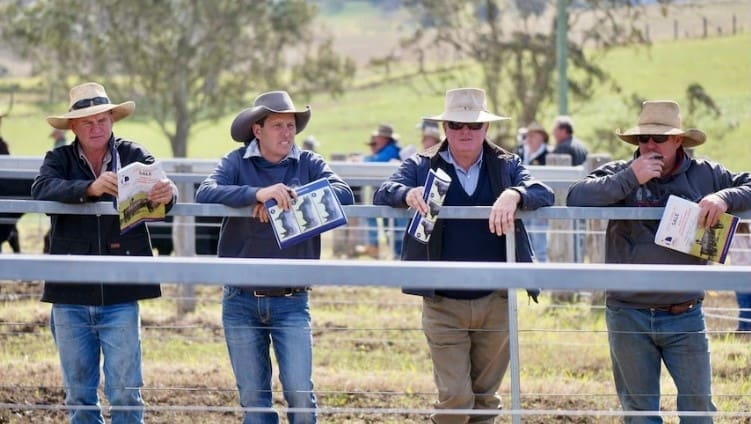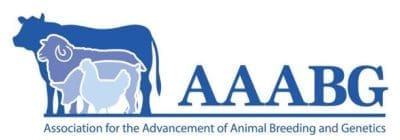This weekly genetics review has generated countless column centimetres about the development and value of objective measurement technologies over the years – but what do we know about the cattle industry people who choose to use, or indeed not to use them?

THE amount of genetic information that is available to bull buyers has never been greater.
Historically, southern sales have had large swathes of data on offer, and in recent years this trend has extended to more northern sales.
While northern sales have traditionally lagged the southern industry in the provision of genetic data, rapid advances in genomics have seen many sales now supported with more data aimed at the traits of significance for northern herds.
The Frontier Genetics Brahman Sale vendor group is a good example.
While there has been an uplift in the provision of data, gaining an understanding of who is using the data and what they are using it for is also an important consideration for seedstock producers and those who support producers in their purchasing decisions.
 At the Association for the Advancement of Animal Breeding and Genetics (AAAGB) conference held recently in New Zealand, Central Queensland University researchers Paula Menchon, Jo Manning, David Swain and Anthony Cosby presented new findings that focused on northern Australian producers’ adoption of genetic tools such as EBVs, $Indexes and genomic profiles.
At the Association for the Advancement of Animal Breeding and Genetics (AAAGB) conference held recently in New Zealand, Central Queensland University researchers Paula Menchon, Jo Manning, David Swain and Anthony Cosby presented new findings that focused on northern Australian producers’ adoption of genetic tools such as EBVs, $Indexes and genomic profiles.
This research was conducted in 2024 via an online survey of 97 producers from Queensland, the Northern Territory and northern parts of Western Australia. Of those participating in the survey, 55 percent were classified as commercial producers with the remainder seedstock breeders.
Producers were grouped as either adopters or non-adopters of genetic tools, with their responses analysed to consider the impact of demographics, production systems and data recording on adoption.
Age a factor
A key finding was the impact that producer age had on adoption, and how differently this occurred between commercial and seedstock producers.
In seedstock herds, the likelihood of using EBVs, $Indexes or genomics increased with producer age. The results demonstrated that with each extra year in age, there was an increase in the odds of adoption by 6.4pc. However, among commercial producers, the odds of adoption decreased by 5.2pc for every additional year of age.
These results highlight the variation that currently exists in opinions and beliefs around objective selection among producers. Many older seedstock producers recognise the value of EBVs, $Indexes and genomics and have a stronger tendency to present this information prominently as part of their sale information.
However, if their client base is largely made up of older commercial producers – a group found to be less likely to use genetic tools – the availability of data may not be reflected in purchasing decisions.
For older commercial producers, the research indicated that adoption is more likely when genetic information is clearly connected to herd and business outcomes. In practice, this suggests seedstock producers need to tailor the presentation of EBVs and indexes more closely to their buyers’ profiles.
Emphasis should be placed on the traits most relevant to buyers’ production environments and market focus, rather than on generic improvements.
Link between data recording and adoption
In addition to the influence age has on the likelihood of adoption, there was a strong link between data recording and adoption among commercial producers. Those who recorded performance data on their cattle were 21 times more likely to use genetic tools than those who did not.
The specific traits recorded also differed between sectors. Commercial adopters most often recorded sales weight, structure, conformation and appearance, while seedstock adopters focused on scrotal circumference, weaning weight, and 200/400/600-day weights.
For industry advisors, or for seedstock breeders closely engaged with their clients, encouraging and supporting even modest levels of on-farm recording, particularly of traits buyers already prioritised, could be a highly effective step in making genetic information more relevant and useful in bull selection.
However, the paper also noted that property size, low stocking rates, and poor connectivity in northern systems mad data collection more challenging, and this needs to be considered when recommending recording programs to producers.
The findings from this research highlight the importance that should be given by seedstock producers to understand their client base more deeply. The work also showed that adoption was more likely when producers understood the genetic tool and believed it was important for the business, both in commercial and seedstock herds.
Receiving advice on how to use the tools was also a significant adoption driver, particularly for seedstock producers.
In turn, if the seedstock producers know whether their buyers have an understanding, and if they have had direct guidance from a respected advisor could help tailor pre-sale communication as well as follow-up support.
In addition, having a better understanding of a client base, particularly knowing whether buyers are younger or older, and whether they already record herd data, can guide how EBVs, $Indexes and genomics are presented.
Tailoring the level of detail, the traits emphasised, and the examples used ensures the information is relevant and more likely to be applied in bull selection decisions.

Alastair Rayner
Alastair Rayner is Principal of RaynerAg and an Extension & Engagement Consultant with the Agricultural Business Research Institute (ABRI). He has over 28 years’ experience advising beef producers and graziers across Australia. Alastair can be contacted here or through his website: www.raynerag.com.au